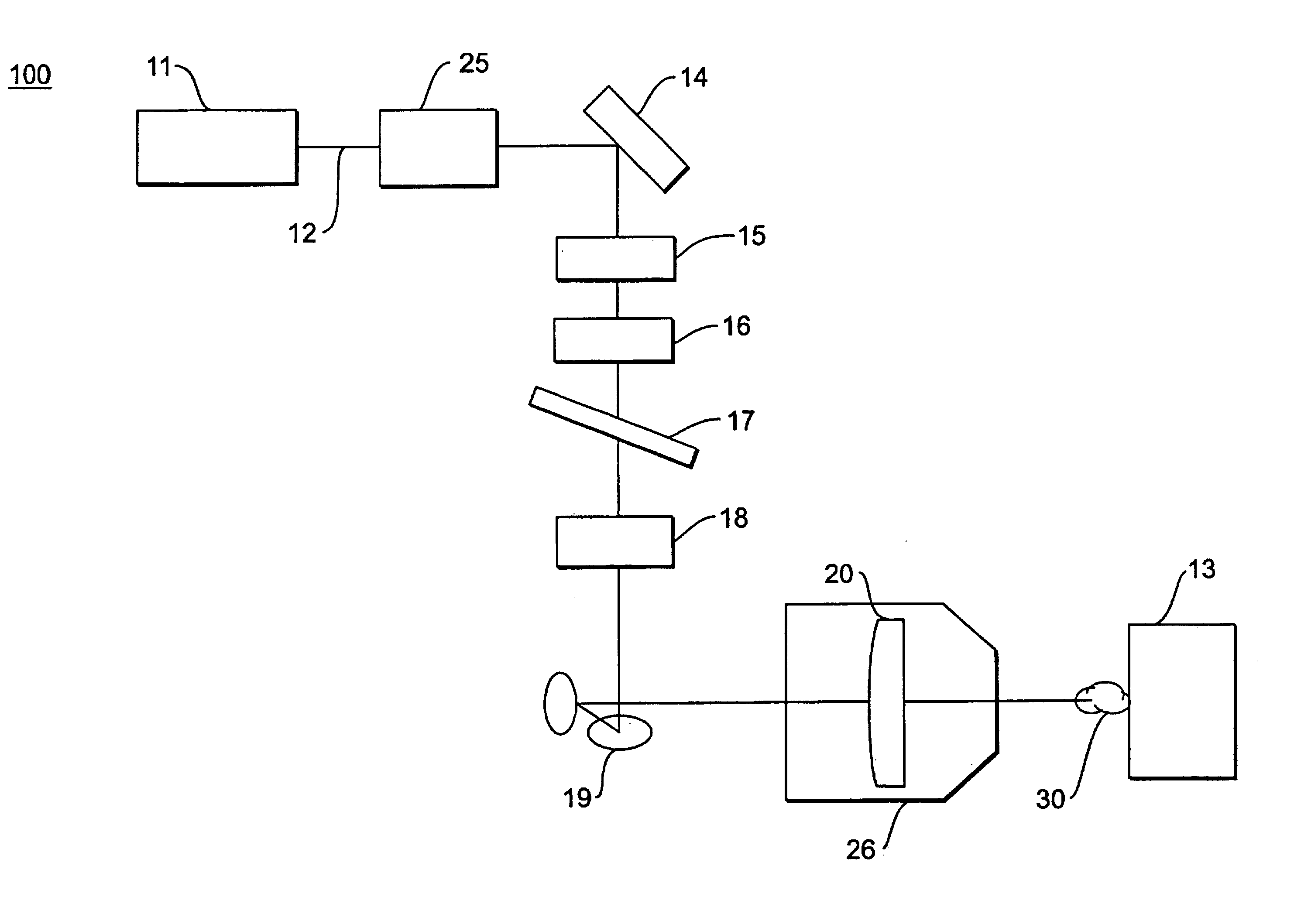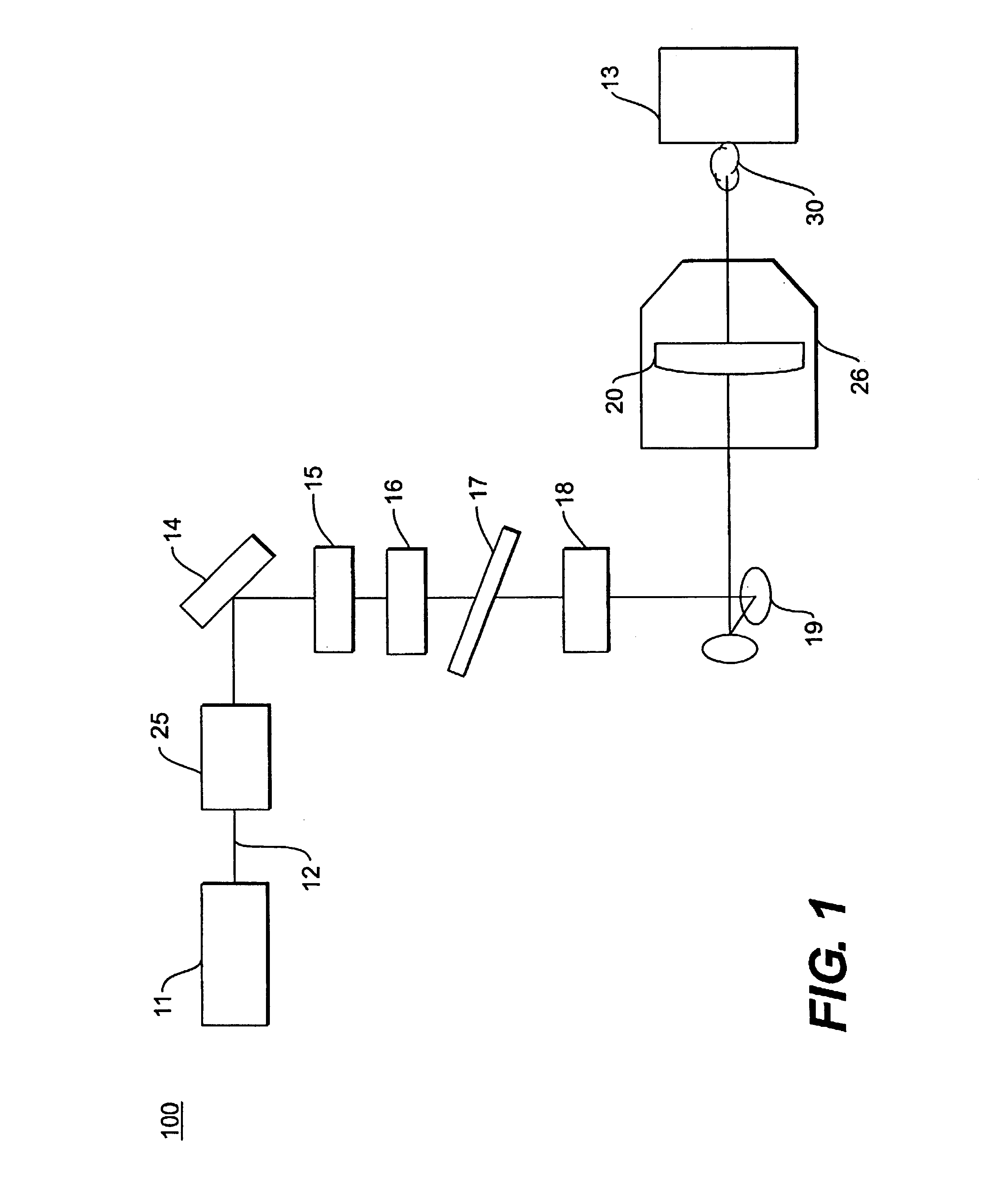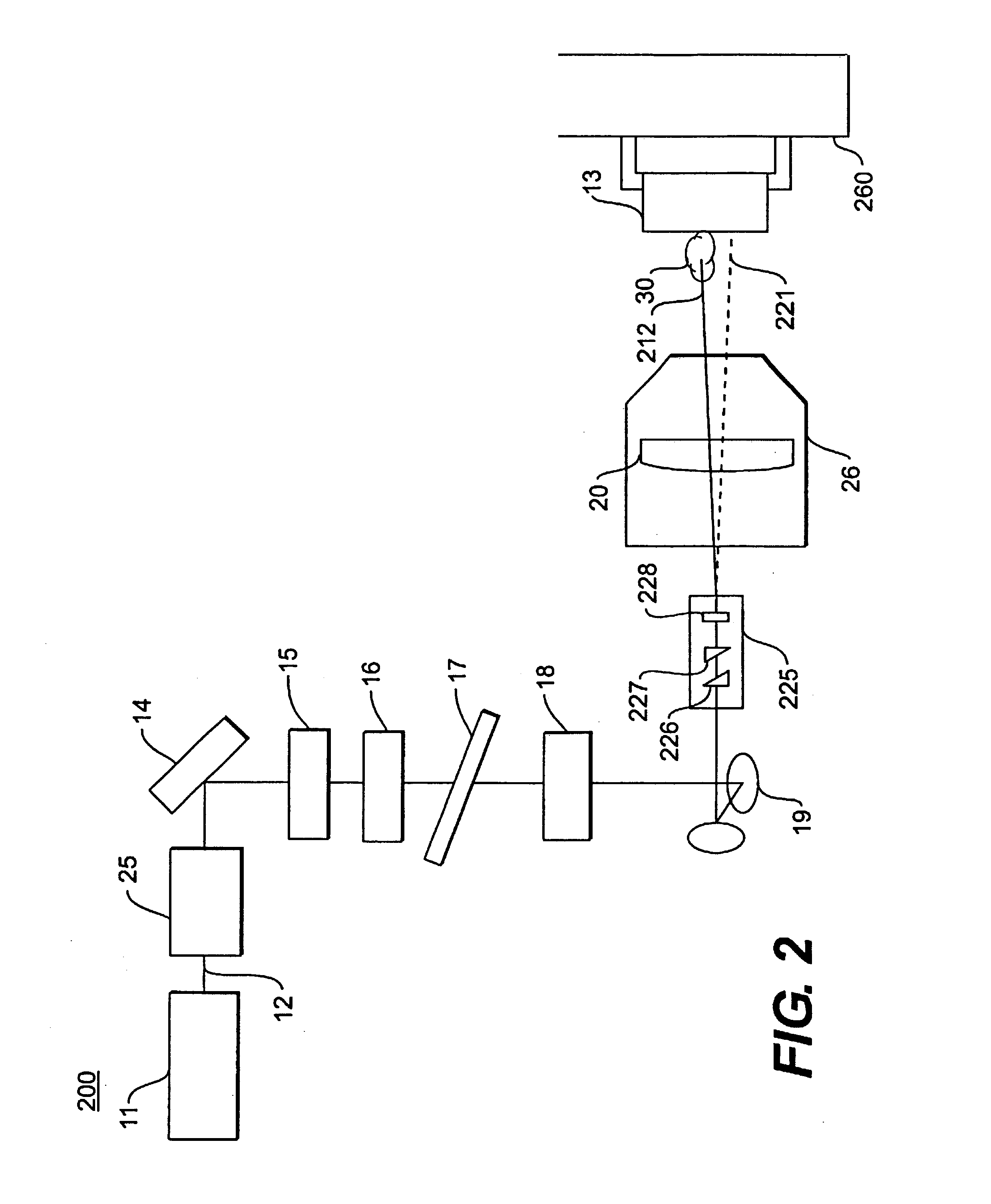Laser-induced plasma micromachining
a laser ablation and plasma technology, applied in the field of laser ablation, can solve the problems of micromachining, laser micromachining materials typically require high precision and quality, and the formation of craters and heat-affected zones
- Summary
- Abstract
- Description
- Claims
- Application Information
AI Technical Summary
Benefits of technology
Problems solved by technology
Method used
Image
Examples
Embodiment Construction
FIG. 1 depicts an exemplary system 100 for laser ablation. A laser system 11 can be any chirped pulse amplified laser system capable of generating pulses having pulse widths of 1 picosecond (ps) or less, such as, for example, femtosecond or picosecond laser systems using a Ti:Sapphire oscillator. Other examples of chirped pulse amplified laser systems include those using Nd:Glass, Yb:Glass, or hybrid oscillators. The generated pulses are directed along a path 12 towards a target material 13 by various optical components. The optical components along optical path 12 may include, for example, a mirror 14, a shutter 15, a ½ wave plate 16, a beam splitter 17, a ¼ wave plate 18, periscope mirrors 19, and a lens 20. A single shot autocorrelator 25 positioned in path 12 may also optionally be used to measure the pulse width. One of skill in the art will recognize that the optical system depicted in FIG. 1 is exemplary and that other configurations and optical components can be used without...
PUM
| Property | Measurement | Unit |
|---|---|---|
| Time | aaaaa | aaaaa |
| Time | aaaaa | aaaaa |
| Diameter | aaaaa | aaaaa |
Abstract
Description
Claims
Application Information
 Login to View More
Login to View More - R&D
- Intellectual Property
- Life Sciences
- Materials
- Tech Scout
- Unparalleled Data Quality
- Higher Quality Content
- 60% Fewer Hallucinations
Browse by: Latest US Patents, China's latest patents, Technical Efficacy Thesaurus, Application Domain, Technology Topic, Popular Technical Reports.
© 2025 PatSnap. All rights reserved.Legal|Privacy policy|Modern Slavery Act Transparency Statement|Sitemap|About US| Contact US: help@patsnap.com



